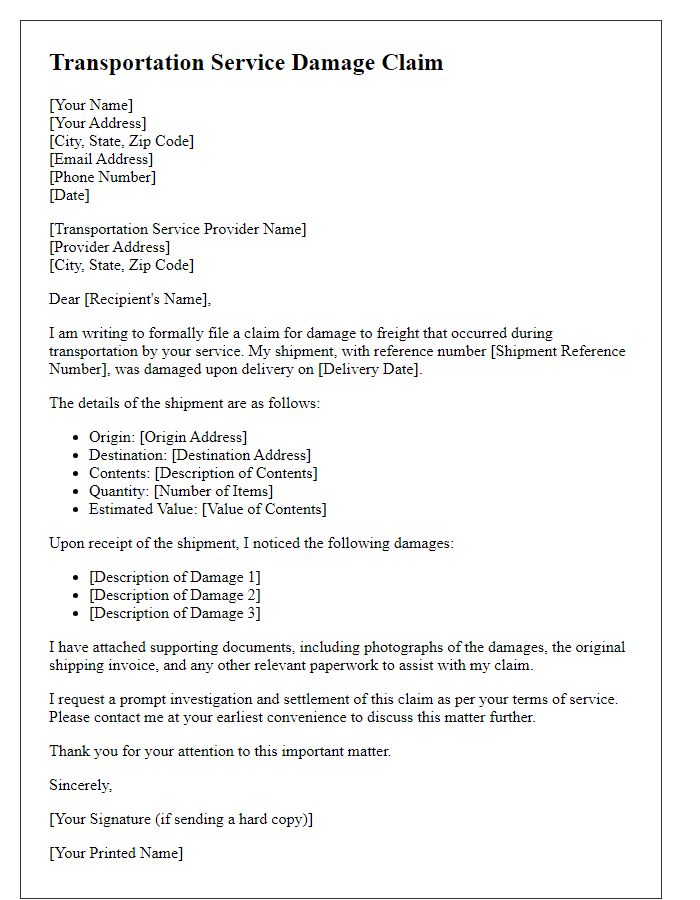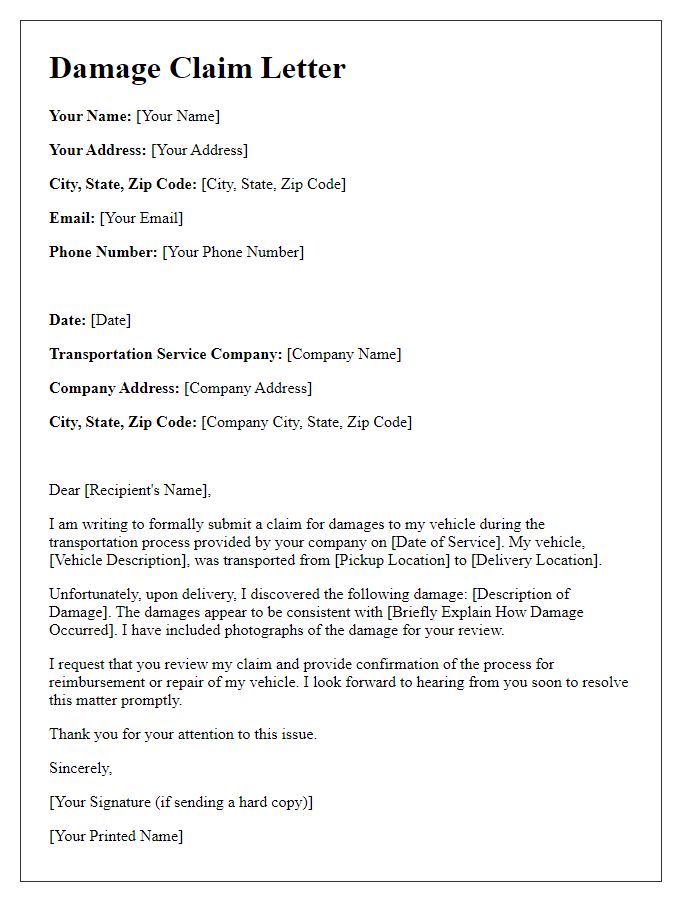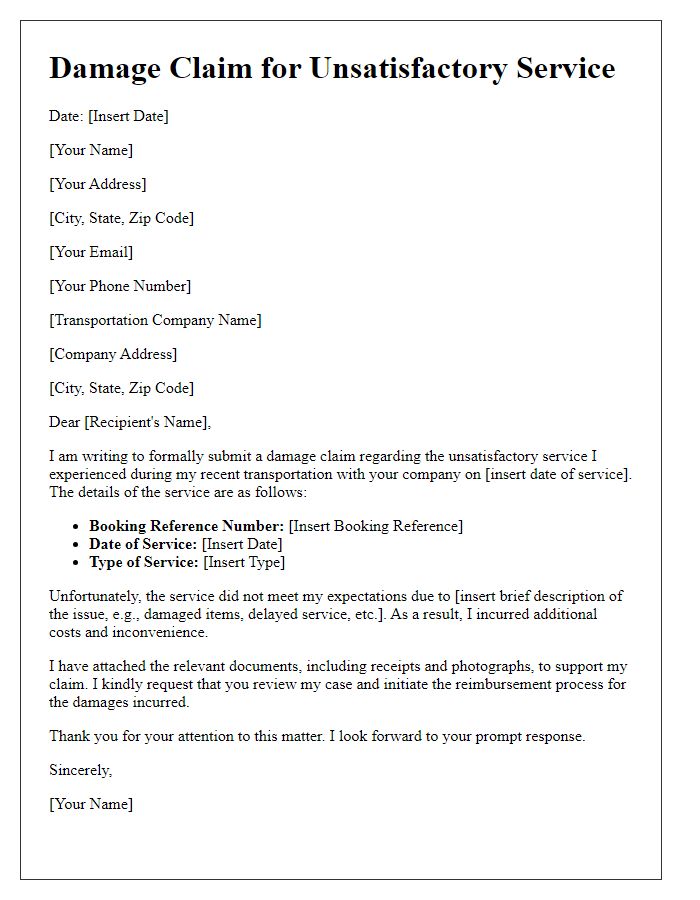Are you dealing with the stress of a damaged shipment? Navigating the ins and outs of a transportation service damage claim can feel overwhelming. With the right approach, you can streamline the process and ensure you get the compensation you deserve. So, grab a cup of coffee and dive into our detailed guide to learn how to file your claim effectively!

Clear identification of parties involved
The transportation service damage claim process requires clear identification of parties involved in the incident. This includes the claimant, typically the individual or organization affected by the damage, such as a business that received damaged goods. The transportation company, responsible for the delivery service, must also be identified, along with essential details like their business name, address, and contact information. Shipment details are crucial; including the tracking number, date of shipment, and origin and destination addresses, ensures accurate retrieval of records. Additionally, contact information for the sender, usually the shipper, needs to be included. This comprehensive identification of all relevant parties facilitates a smoother claims process and provides clear accountability.
Detailed description of the incident
During the recent transportation of fragile glassware belonging to a prestigious art gallery, an incident occurred on March 15, 2023, involving a freight truck operated by XYZ Logistics. The truck, while navigating Main Street in downtown Chicago, experienced a sudden bump due to an uneven road surface, causing the contents in the cargo hold to shift. The glassware, valued at over $50,000 collectively, was improperly secured despite clear labels indicating fragility. As a result, several pieces were damaged, with two large vases shattered beyond repair and numerous smaller items suffering cracks. A comprehensive inspection revealed inadequate padding and strapping, contributing to the failure in safe transport. This incident not only caused significant financial loss but also disrupted a scheduled exhibition at the gallery, incurring additional costs for rescheduling and insurance claims.
Documentation and evidence submission
The submission of documentation and evidence for a transportation service damage claim is essential to initiate the claims process efficiently. Detailed photographs of the damaged goods (showing all angles with timestamps) serve as critical evidence for the extent of the damage. A receipt proving the original value of the items, including purchase details from vendors or online retail platforms (such as Amazon or eBay), must be attached for valuation assessment. Furthermore, the waybill or shipping invoice should reflect the transportation details (carrier name and tracking number). Any previous correspondence with the transportation provider, including emails or chat transcripts, documenting the issue can strengthen the claim. All submissions must be organized chronologically and retain professional clarity to facilitate processing by the claims department.
Claim amount and justification
Transportation service damage claims require thorough documentation and clear justification. Claims typically include details such as the total claim amount, which must align with the cost of repairs or replacement of damaged items. Specifics about the items damaged during transport, including quantities, descriptions, and any identifying numbers (like serial numbers) play a critical role. The claim should mention the transportation service provider's name, the date of the incident, and any relevant tracking numbers. Photographic evidence illustrating the damage and any reports made immediately at the time of delivery enhance the credibility of the claim. Justification can also cite industry standards for item handling and packaging that were not adhered to, indicating negligence on the part of the transportation provider. Accurate estimation methods, preferably backed by expert assessments, will strengthen this claim.
Contact information for follow-up
When filing a transportation service damage claim, include key details for effective follow-up. Provide your full name, ensuring clarity for reference during correspondence. Include a current address, noting apartment number if applicable, for physical communication. List a contact phone number, ideally a mobile device for immediate availability. Include an email address, allowing for digital correspondence and documentation attachments. Mention any claim number assigned by the transportation service for easy tracking. Indicate the date of the incident, preserving the timeline for the investigation. If relevant, note any specific department or representative's name for direct communication.
Letter Template For Transportation Service Damage Claim Samples
Letter template of transportation service damage claim for damaged goods.

Letter template of transportation service damage claim for delayed delivery.

Letter template of transportation service damage claim for insufficient packaging.

Letter template of transportation service damage claim for freight loss.

Letter template of transportation service damage claim for vehicle damage.

Letter template of transportation service damage claim for cargo mishandling.

Letter template of transportation service damage claim for shipping errors.

Letter template of transportation service damage claim for unsatisfactory service.






Comments